Abstract
No evidence of vaccine virus transmission was found in two studies where Wistar RA 27/3 rubella vaccine was administered intranasally. Vaccine was immunogenic in all of 23 vaccinated children in one study, while in the other only 5 of the 11 vaccinees developed antibody. The reduced seroconversion rate in the latter study appears to have been caused by one or a combination of factors, including the vaccination technique, the presence of infective nasal conditions in vaccinees and the titre of vaccine used.
Full text
PDF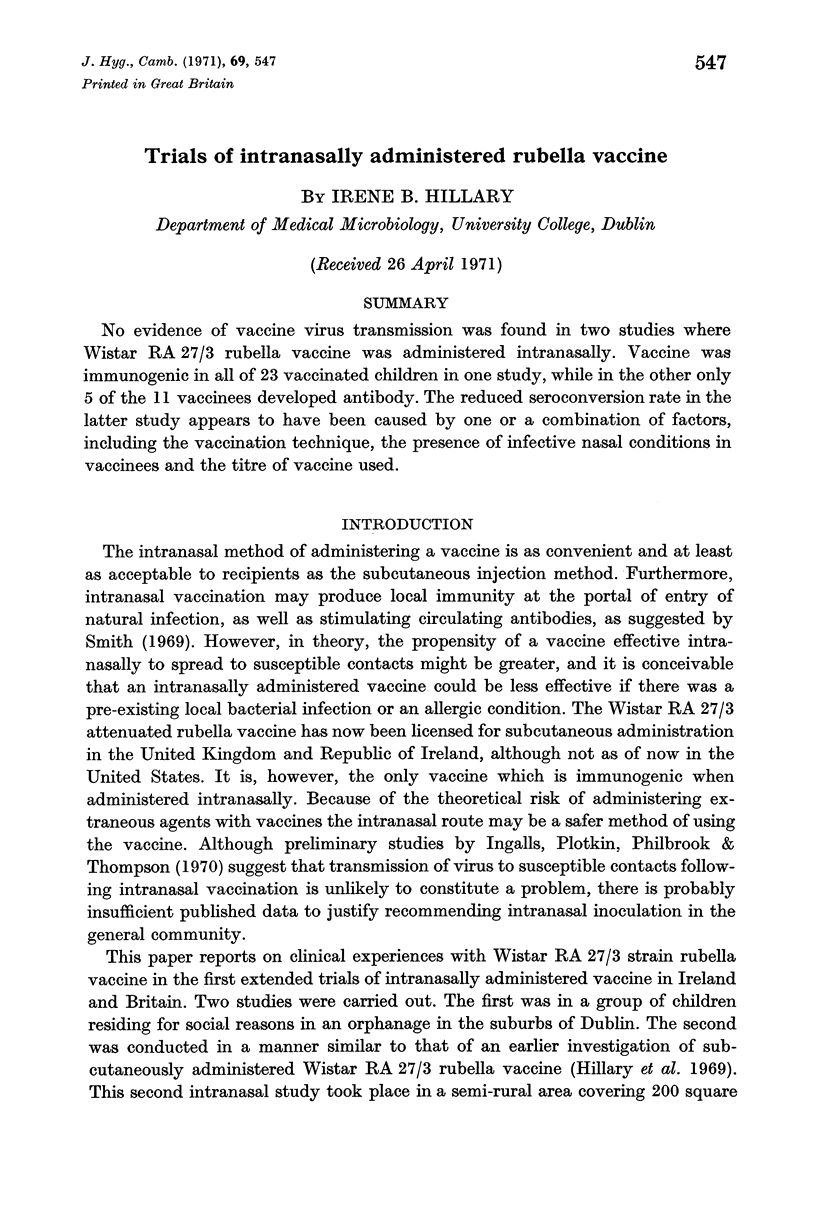
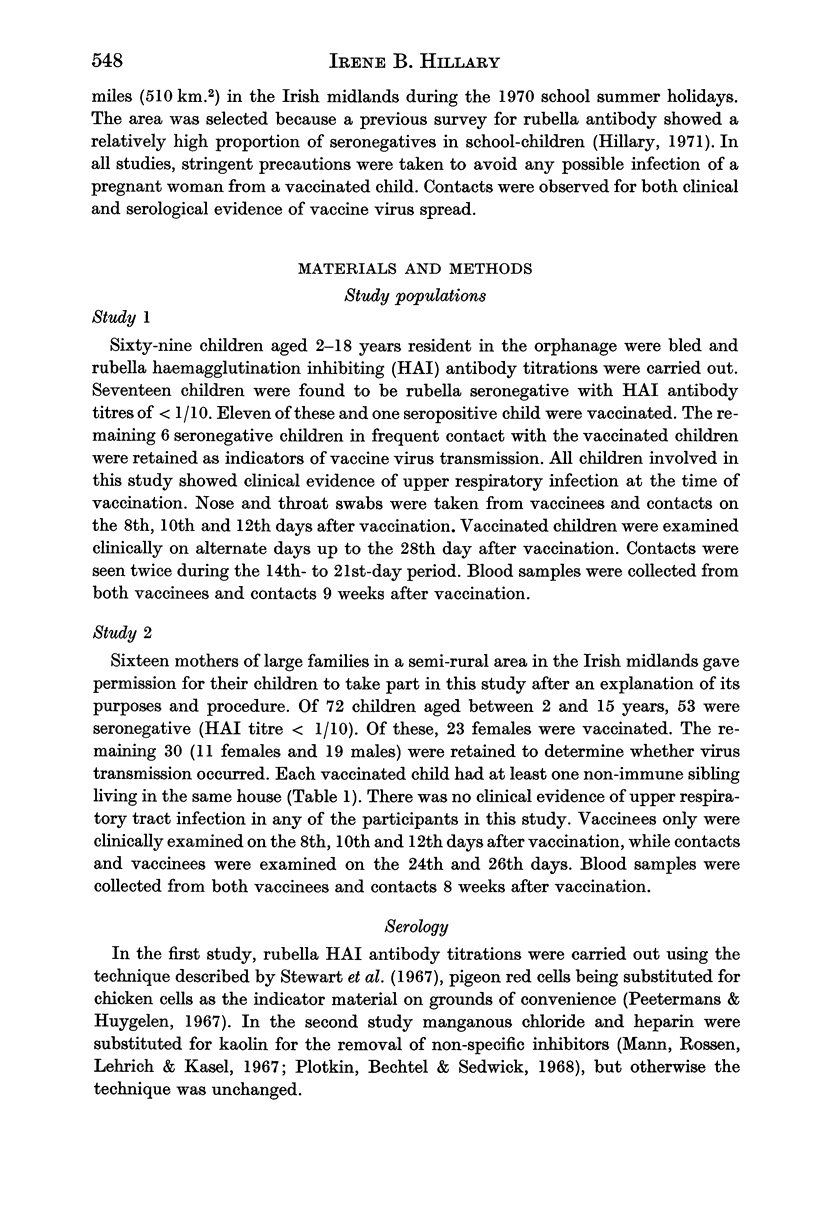
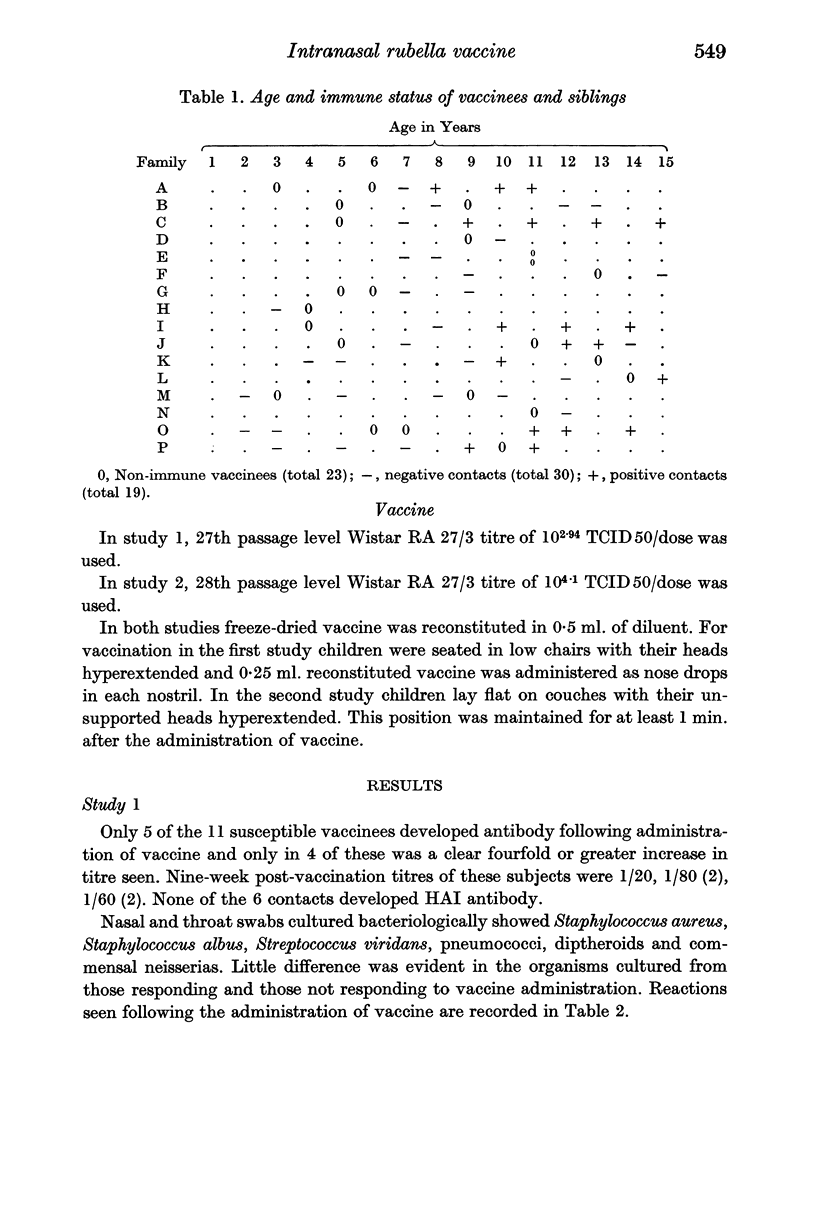
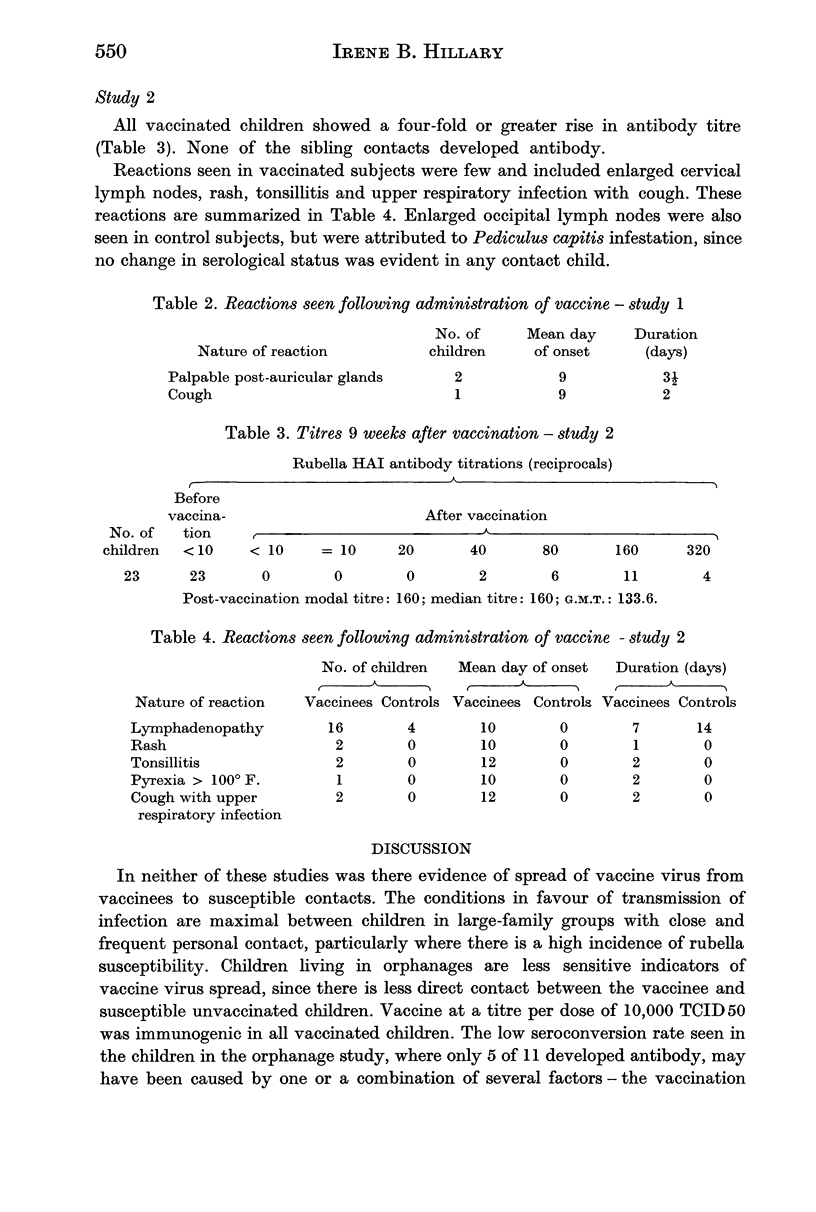
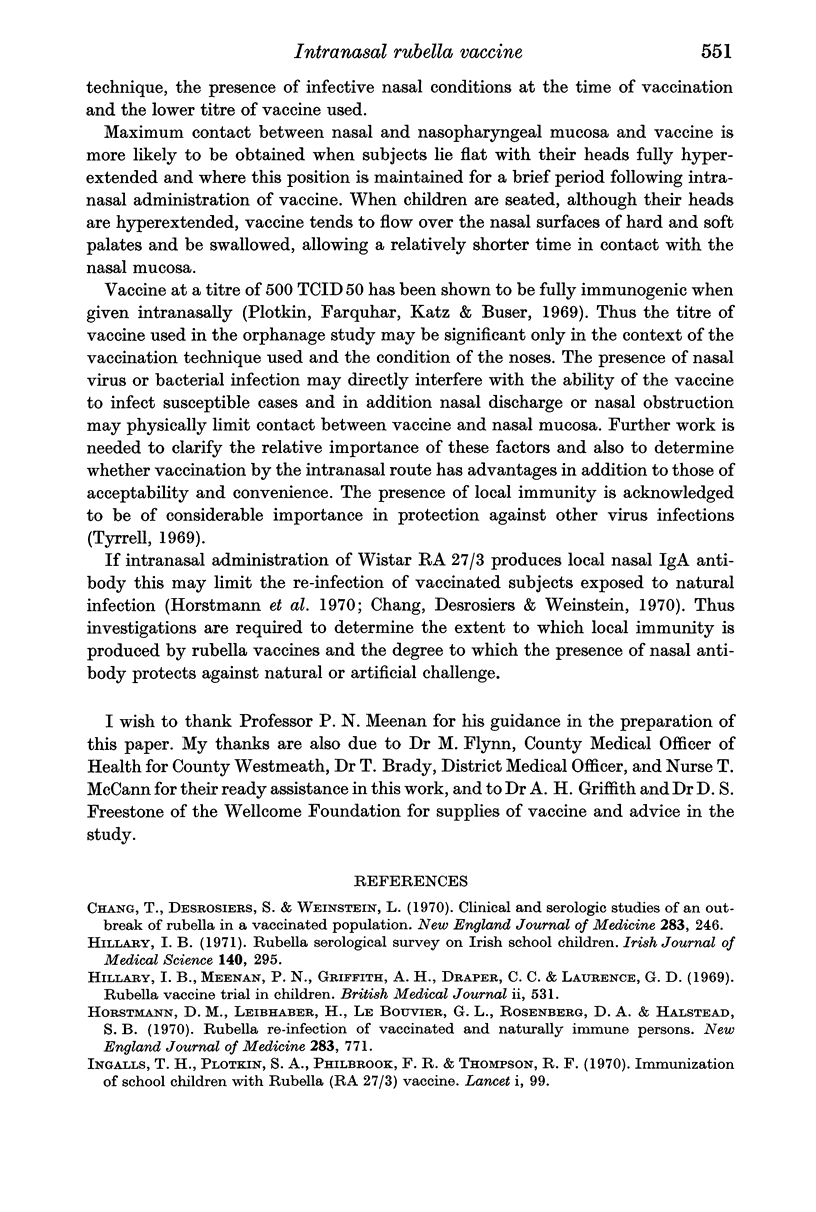
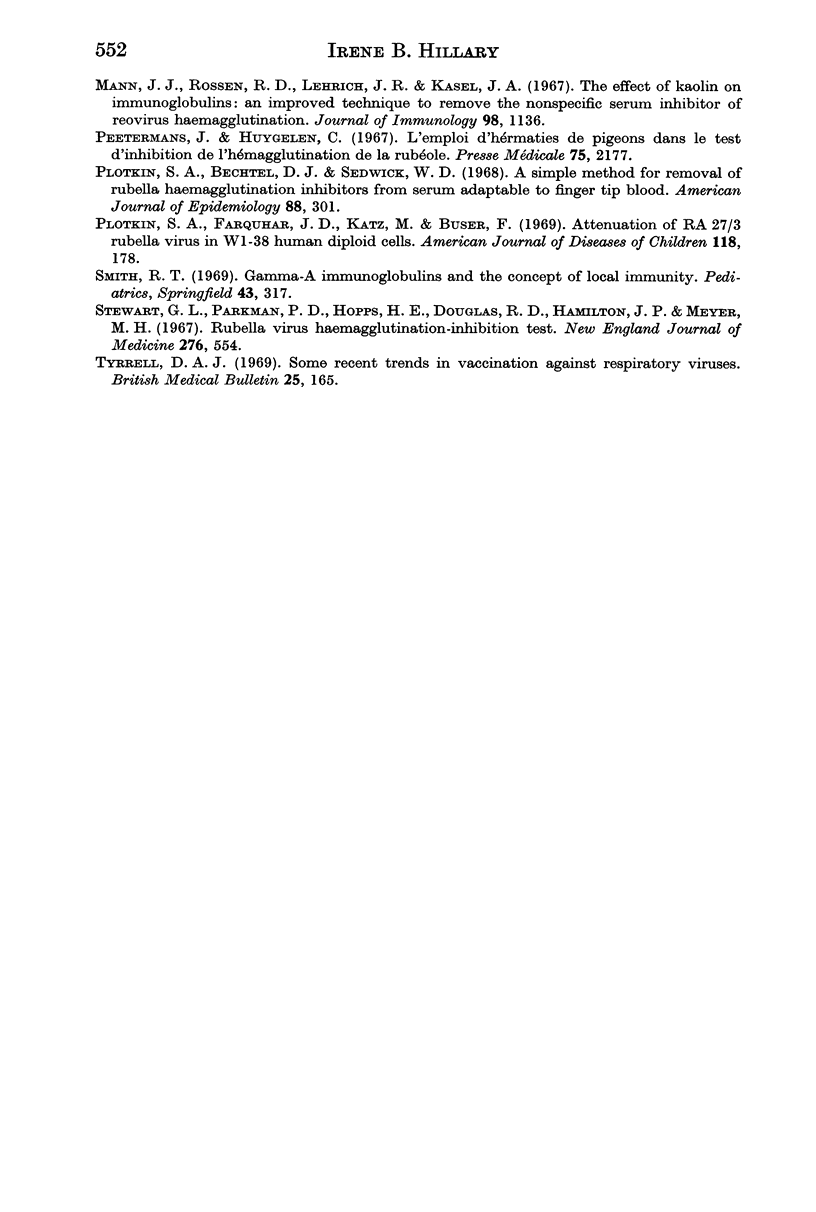
Selected References
These references are in PubMed. This may not be the complete list of references from this article.
- Chang T. W., DesRosiers S., Weinstein L. Clinical and serologic studies of an outbreak of rubella in a vaccinated population. N Engl J Med. 1970 Jul 30;283(5):246–248. doi: 10.1056/NEJM197007302830507. [DOI] [PubMed] [Google Scholar]
- Hillary I. B., Meenan P. N., Griffith A. H., Draper C. C., Laurence G. D. Rubella vaccine trial in children. Br Med J. 1969 May 31;2(5656):531–532. doi: 10.1136/bmj.2.5656.531. [DOI] [PMC free article] [PubMed] [Google Scholar]
- Hillary I. B. Rubella serological survey on Irish school children. Ir J Med Sci. 1971 Jul;140(7):295–304. doi: 10.1007/BF02937774. [DOI] [PubMed] [Google Scholar]
- Horstmann D. M., Liebhaber H., Le Bouvier G. L., Rosenberg D. A., Halstead S. B. Rubella: reinfection of vaccinated and naturally immune persons exposed in an epidemic. N Engl J Med. 1970 Oct 8;283(15):771–778. doi: 10.1056/NEJM197010082831501. [DOI] [PubMed] [Google Scholar]
- Ingalls T. H., Plotkin S. A., Philbrook F. R., Thompson R. F. Immunisation of schoolchildren with rubella (RA27-3) vaccine. Intranasal and subcutaneous administration. Lancet. 1970 Jan 17;1(7638):99–101. doi: 10.1016/s0140-6736(70)90460-5. [DOI] [PubMed] [Google Scholar]
- Mann J. J., Rossen R. D., Lehrich J. R., Kasel J. A. The effect of kaolin on immunoglobulins: an improved technique to remove the nonspecific serum inhibitor of reovirus hemagglutination. J Immunol. 1967 Jun;98(6):1136–1142. [PubMed] [Google Scholar]
- Peetermans J., Huygelen C. L'emploi d'hérmaties de pigeons dans le test d'inhibition de l'hémagglutination de la rubéole. Presse Med. 1967 Oct 21;75(43):2177–2178. [PubMed] [Google Scholar]
- Plotkin S. A., Bechtel D. J., Sedwick W. D. A simple method for removal of rubella hemagglutination inhibitors from serum adaptable to finger-tip blood. Am J Epidemiol. 1968 Nov;88(3):301–304. doi: 10.1093/oxfordjournals.aje.a120888. [DOI] [PubMed] [Google Scholar]
- Plotkin S. A., Farquhar J. D., Katz M., Buser F. Attenuation of RA 27-3 rubella virus in WI-38 human diploid cells. Am J Dis Child. 1969 Aug;118(2):178–185. doi: 10.1001/archpedi.1969.02100040180004. [DOI] [PubMed] [Google Scholar]
- Stewart G. L., Parkman P. D., Hopps H. E., Douglas R. D., Hamilton J. P., Meyer H. M., Jr Rubella-virus hemagglutination-inhibition test. N Engl J Med. 1967 Mar 9;276(10):554–557. doi: 10.1056/NEJM196703092761006. [DOI] [PubMed] [Google Scholar]
- Tyrrell D. A. Some recent trends in vaccination against respiratory viruses. Br Med Bull. 1969 May;25(2):165–171. doi: 10.1093/oxfordjournals.bmb.a070687. [DOI] [PubMed] [Google Scholar]


